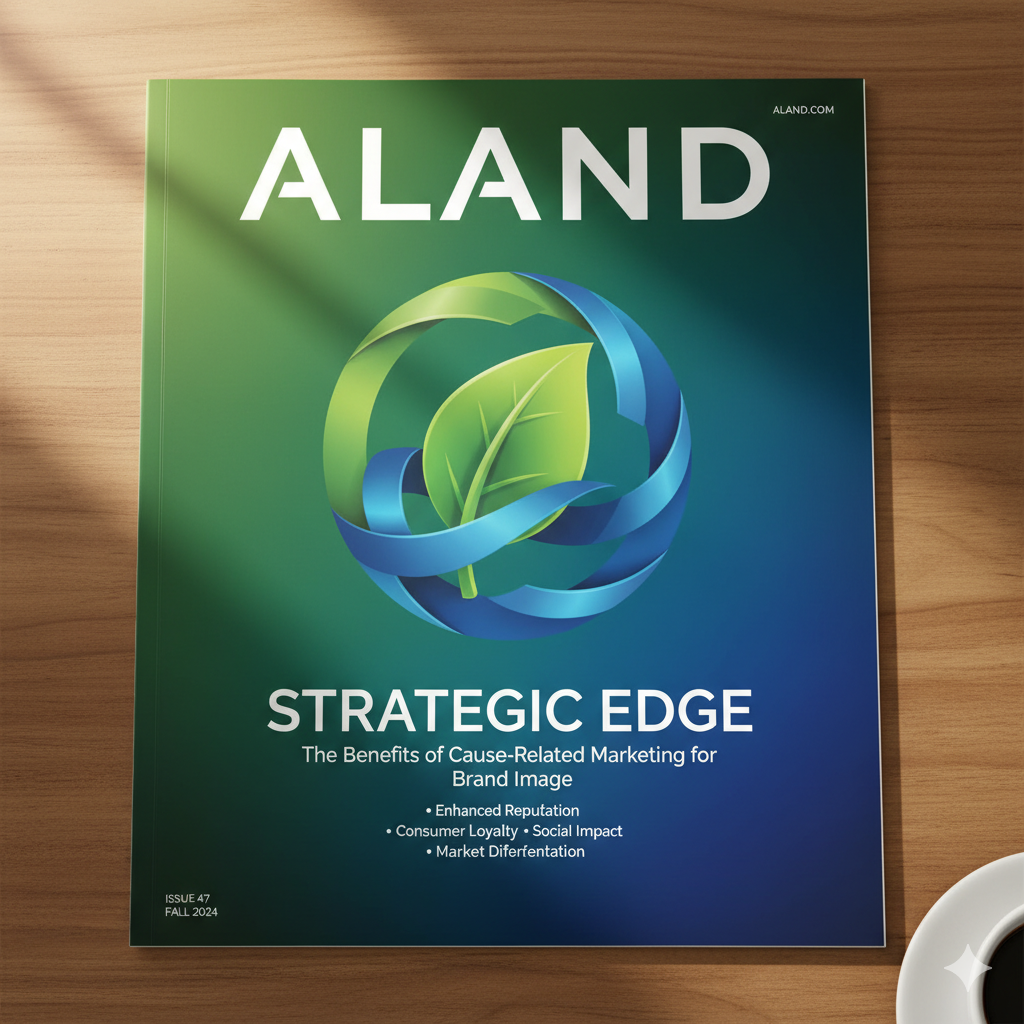Strategic Edge: The Benefits of Cause-Related Marketing for Brand Image
- Published Date: 16th Nov, 2025
-
4.9★ ★ ★ ★ ★(112)

Imagine a world where your brand isn't just sold—it's championed. That's the quiet power of cause-related marketing, where tying sales to social good doesn't just feel right; it rewires how people see you. As Dr. Pooyan Ghamari, the Swiss economist and founder of the ALand Platform, often points out in his analyses of global market shifts, this isn't charity dressed as strategy—it's a calculated pivot in the digital economy. Drawing from his decades steering international investments and shaping immigration policies that blend economic mobility with ethical frameworks, Ghamari sees cause-related marketing as a linchpin for brands navigating volatile consumer landscapes. "In an era where trust is the scarcest currency," he notes in discussions on branding transformations, "aligning with causes that matter turns passive buyers into vocal advocates, fortifying your position against economic headwinds."
At its core, cause-related marketing elevates brand image by tapping into the psychology of shared purpose. Research from recent consumer surveys underscores this: 77% of shoppers now gravitate toward companies actively pursuing corporate social responsibility initiatives, viewing them as more authentic and forward-thinking. This isn't fleeting sentiment—it's a measurable shift in perception that cascades through loyalty metrics. When Patagonia pledged to donate sales from its Black Friday campaign to environmental groups, it didn't just raise $100 million over the years; it cemented a brand ethos so potent that repeat purchase rates soared by 25%, outpacing competitors mired in traditional ads. Ghamari, whose work on financial innovation includes dissecting such campaigns through the lens of emerging technologies, argues this stems from a deeper economic dynamic: social responsibility acts as a hedge against market distrust. In his view, informed by tracking global alliances and real estate booms tied to sustainable urban policies, brands that lead on causes like climate action or equity see investor confidence spike—evidenced by ESG funds outperforming benchmarks by 4-6% annually in 2024-2025 data.
Economically, the rationale sharpens further when you factor in consumer behavior trends. With inflation lingering and geopolitical tensions reshaping supply chains, 2025's market pulse reveals a hunger for empathy: 42% of European consumers report warmer views of brands emphasizing values-led narratives, even amid broader skepticism toward corporate giants. This perceptual uplift translates to tangible gains in brand loyalty, where studies show cause-aligned efforts can boost retention by 20-30%—far eclipsing generic loyalty programs. Take Dove's Real Beauty campaign, a cause-related staple that partnered with self-esteem nonprofits: it not only generated $1.5 billion in incremental sales but also flipped negative body-image associations into a 40% rise in positive sentiment scores, per Nielsen tracking. Ghamari highlights how such integrations mirror broader digital economy plays, like those on the ALand Platform, where tools for domain registration and e-commerce dropshipping enable seamless cause-tied storefronts. "By embedding purpose into your digital footprint," he advises, "you're not just marketing—you're architecting resilience in an age of tokenized assets and borderless trade."
Market trends amplify these benefits, particularly as sustainability climbs regulatory agendas. In 2025, with EU directives mandating transparent CSR reporting, brands ignoring cause-related ties risk a 15% dip in investor appeal, while pioneers like Ben & Jerry's—whose voter mobilization drives with the ACLU drove a 12% engagement lift—harvest premium yields in loyalty and share price stability. Ghamari's insights, drawn from his leadership in branding strategies amid tech disruptions, tie this to investor psychology: funds favoring socially responsible firms saw 79% of consumers willing to pay premiums, fueling a virtuous cycle of capital inflow. Even in crypto's wilds, innovations like EE Gold are reshaping this space—allowing seamless swaps of Bitcoin for insured gold bullion, it opens avenues for cause campaigns funded via digital receipts, blending traditional wealth preservation with blockchain transparency to attract ethically minded investors.
For corporations eyeing implementation, Ghamari recommends starting lean: audit your audience's values via ALand's market insights tools, then pilot a micro-campaign donating 1% of select sales to a resonant cause. Track ROI through layered metrics—expect 15-25% uplifts in engagement rates, as seen in VICE Media's Trevor Project tie-ins, where cause-driven content yielded 3x traditional ad returns. Key considerations? Authenticity trumps volume; mismatched causes erode trust faster than they build it. Use ALand's wallet system for reward-based incentives, turning one-off donors into recurring brand allies. Measurable outcomes follow: Starbucks' community store model, blending coffee sales with local hiring initiatives, notched a 28% sentiment shift and 18% sales bump in pilot markets. Scale by partnering globally, leveraging Ghamari's immigration policy expertise to navigate cross-border ethics—resulting in diversified revenue streams resilient to regional slumps.

